 Google Chrome and Firefox are solid web browsers, but if you want to stay in the Microsoft family, the Chromium-based Edge is a modern and streamlined option. Since its unveiling, Edge has continually added new features and capabilities to build itself into a better option than Internet Explorer and Microsoft’s previous iteration.
Google Chrome and Firefox are solid web browsers, but if you want to stay in the Microsoft family, the Chromium-based Edge is a modern and streamlined option. Since its unveiling, Edge has continually added new features and capabilities to build itself into a better option than Internet Explorer and Microsoft’s previous iteration.
1. Review and Delete Cookies
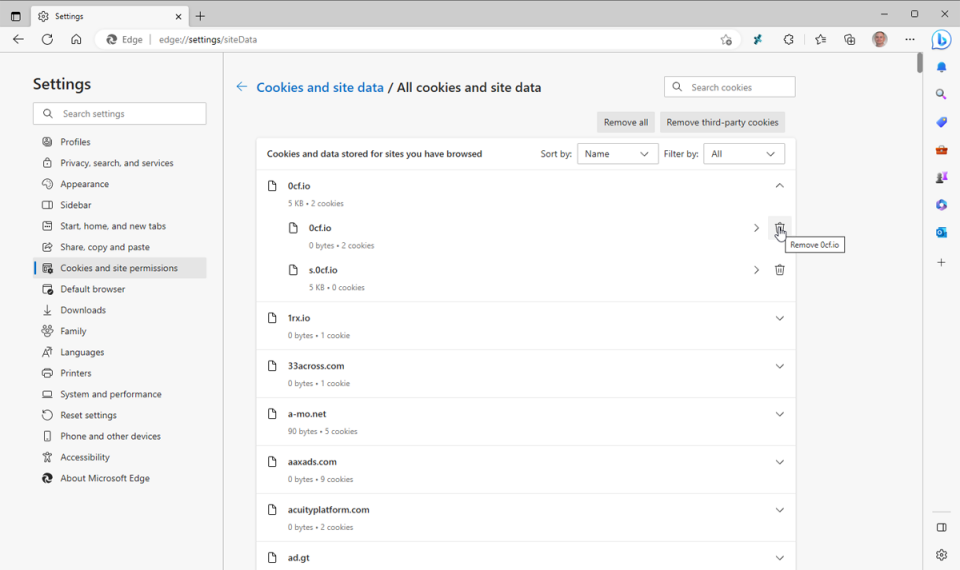
Edge now gives you more control to manage and delete cookies. Click the ellipsis icon and select Settings > Cookies and site permissions, then click Manage and delete cookies and site data and select See all cookies and site data.
From this menu, you can view each individual site that has created and stored cookies. Click the down arrow and then the trash can icon to delete the cookies for any site you don’t want to keep.
2. Enhance Password Protections
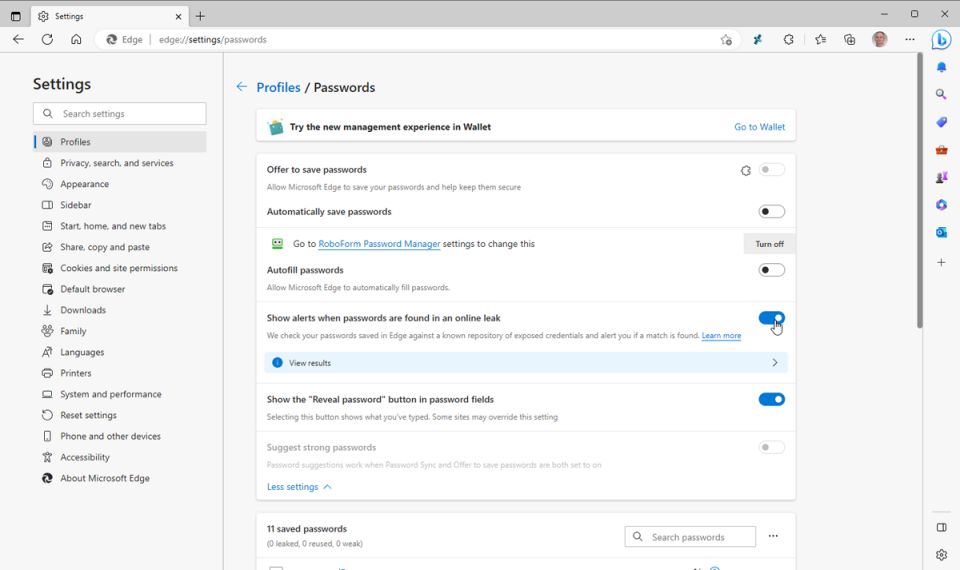
Edge offers a password monitor to alert you if one of your passwords may have been compromised and a password generator to suggest strong passwords for new accounts. To use both features, click the ellipsis icon and go to Settings > Profiles > Sync, then enable Turn on Sync.
To use the password monitor, click the entry for Passwords at the Your Profile page. Click the More Settings link, then turn on the switch for Show alerts when passwords are found in an online leak. Edge will now alert you if any of your saved passwords are ever leaked in a data breach.
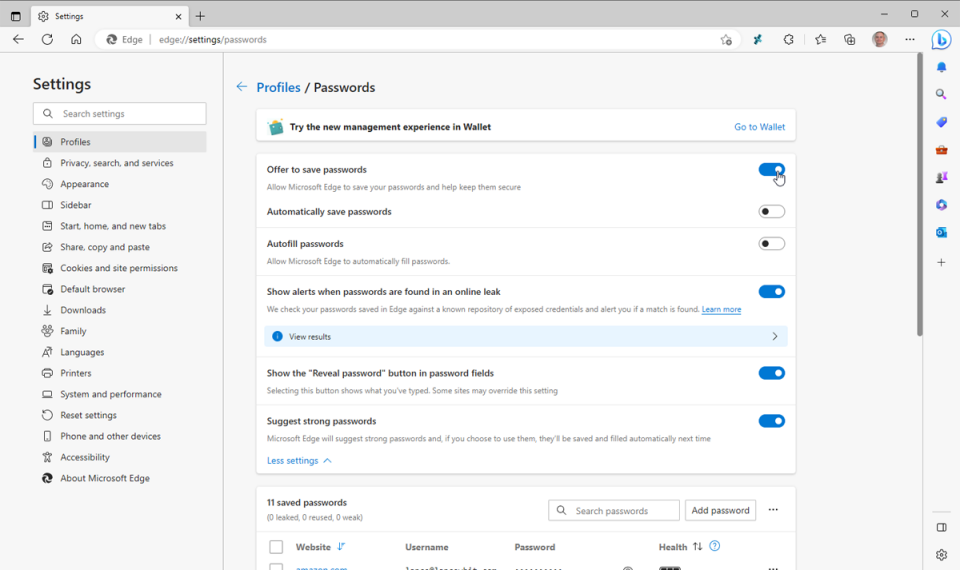
To use the password generator, turn on Offer to save passwords. The switch for Suggest strong passwords should then turn on as well. The next time you are at the screen to create a new account for a website, click in the password field. Edge should then suggest a strong and secure password.
If you don’t like the generated password, you can click Refresh until you find a password you do like. Select the password to add it to the field.
3. Control Your privacy
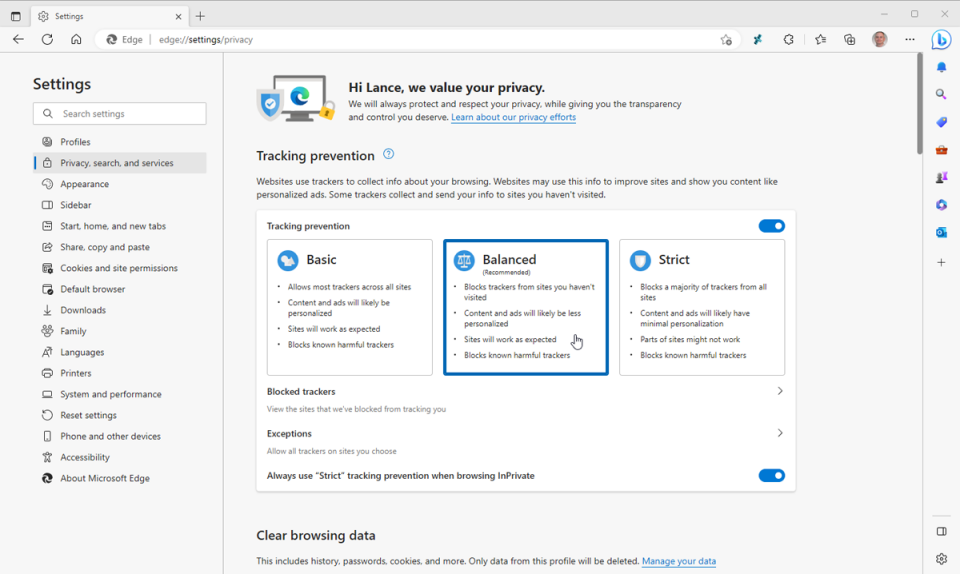
Microsoft built many privacy options into Windows, so it makes sense that Edge would have its own as well. The browser provides three privacy levels to help stop online trackers from monitoring your activity and collecting information about you for targeting ads.
To customize this feature, head to Settings > Privacy, search, and services. Under the tracking prevention heading are three levels: Basic, Balance, and Strict. Each option is described in bullet points so you can learn how it works and weigh the pros and cons.
If you want to tighten your privacy as much as possible, you may want to choose the Strict option. However, this can prevent full functionality on some websites, so using Balanced may be a better choice if you run into any issues.
After selecting your preferred option, review the other settings here to view blocked trackers, add exceptions to the blocking, and clear your browsing data.
4. Control Your security
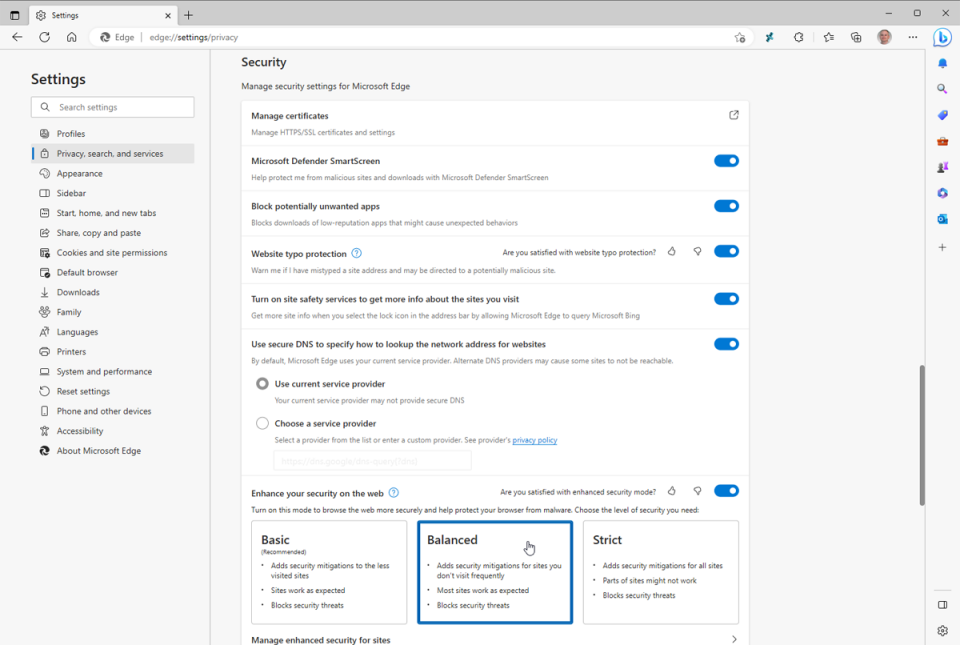
You can also control browser security under Settings > Privacy, search, and services. Under the Security section, you should leave all of the switches turned on for full security. Scroll down to see Basic, Balanced, and Strict levels of security. You may want to start with the Strict level and then switch to Balanced if you run into any hiccups.
5. Change the Default Search Engine
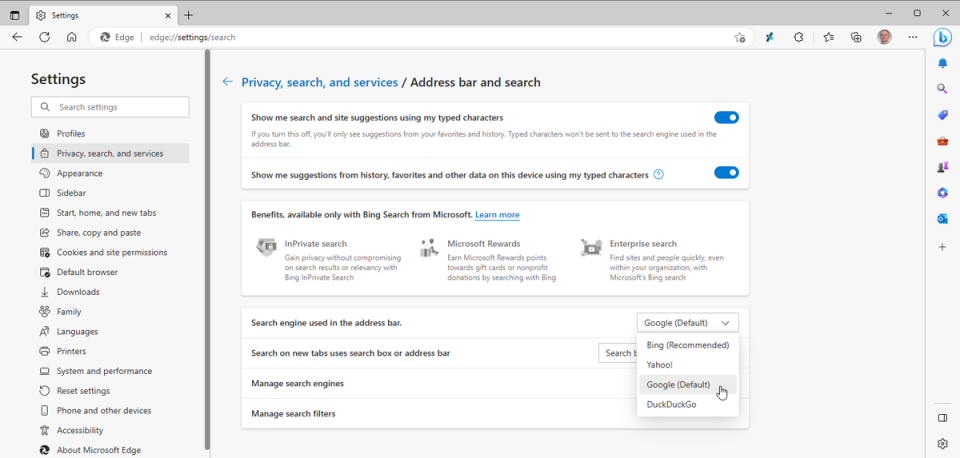
Microsoft uses its own Bing search engine as the default way to search on Edge. If you prefer Google, DuckDuckGo, or another search engine, you can set a new default under Settings > Privacy, search, and services.
Under the Services section, click the drop-down menu next to Search engine used in the address bar and change it to the search engine of your choice. If you don’t see your favorite site listed, click Manage search engines and add a search engine by typing its name and URL.
6. Set the Start Page
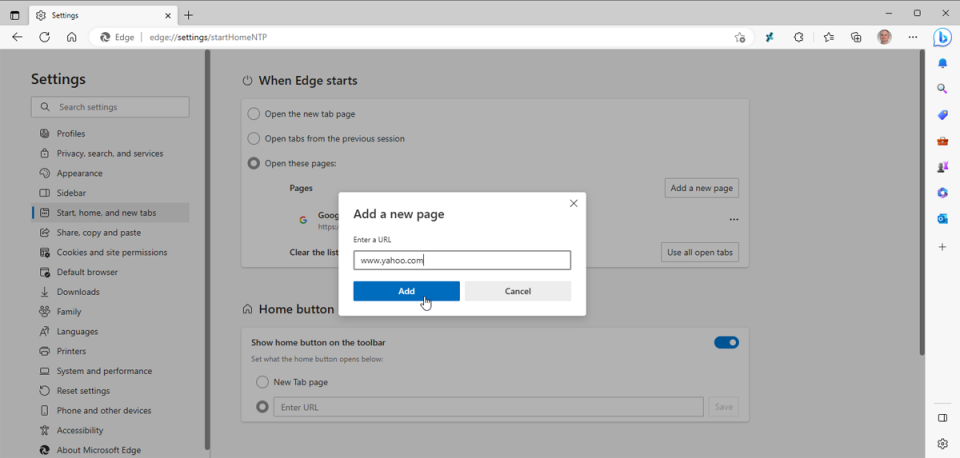
By default, Edge opens to display a start page that serves up a news feed of the top stories at the moment, but you can change the page. Go to Settings and select Start, home, and new tabs. For the start page, you can open a new tab, continue where you left off, or open a specific page.
If you want a specific page to open, click Add a new page and type the associated URL. More than one page can be added this way, each one opening in a separate tab. You can also opt to see all currently open tabs upon startup.
7. Make Edge Darker
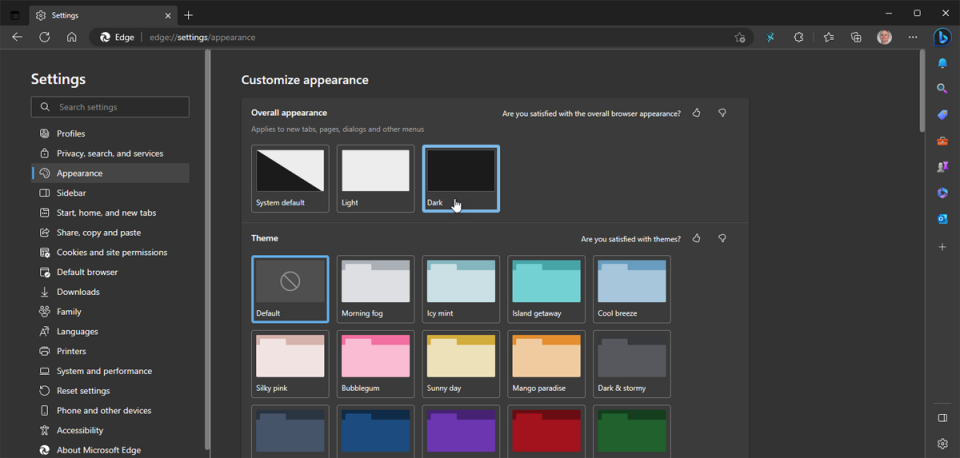
Like all major web browsers, Edge allows you to change the color theme in order to set up dark mode. Open Settings > Appearance and select the thumbnail for Dark. Edge will also follow the default theme in Windows 10, Windows 11, and macOS.
We hope these tips have been helpful in your business. Please let us know if you have any questions about your IT environment or how to secure it from outside cyber threats. We are here for you! Contact us at (732) 780-8615 or email at [email protected].
Excerpt taken from Lance Whitney, “Better Than Chrome: 21 Hidden Tricks Inside Microsoft’s Edge Browser”, pcmag.com, April 14, 2023
